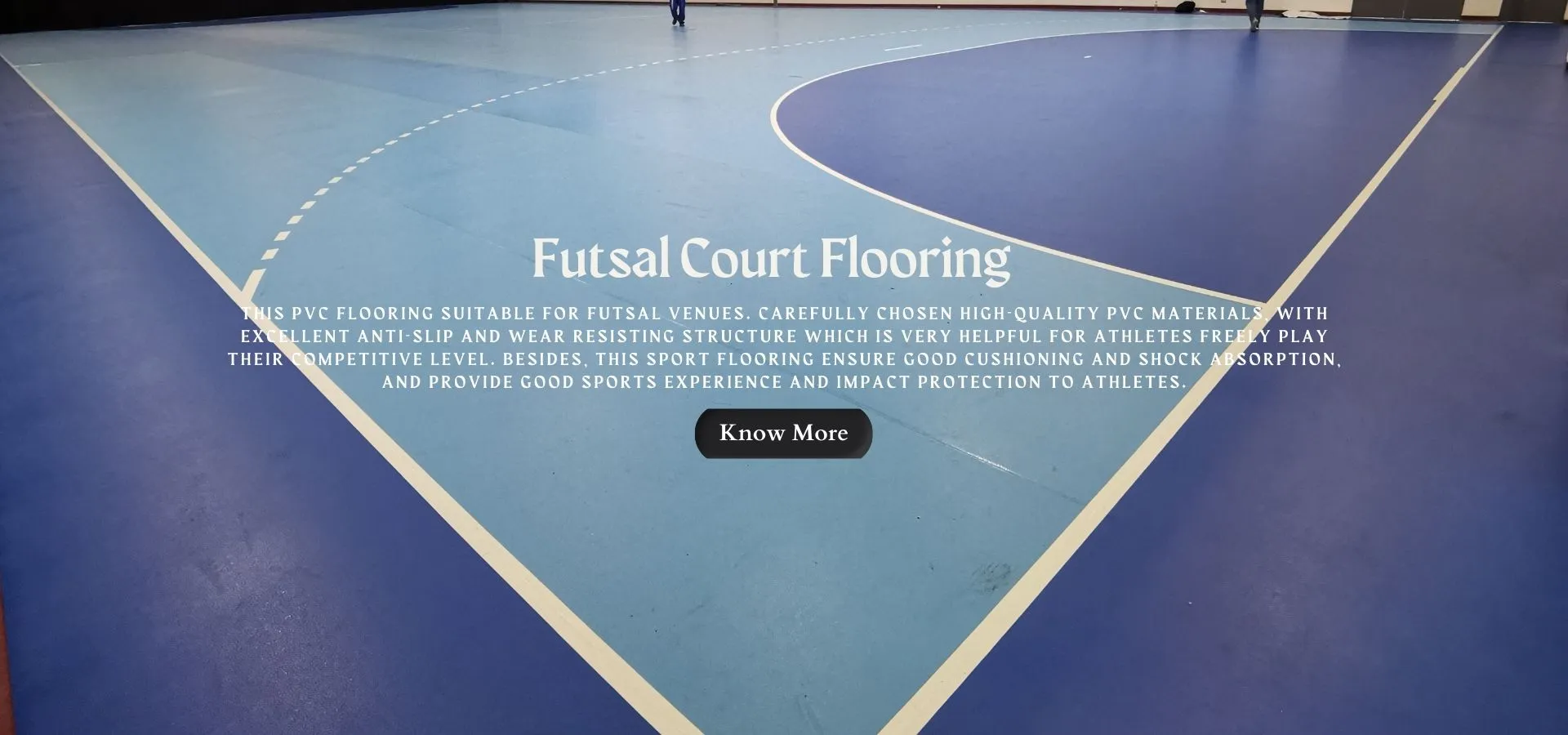ნოე . 29, 2024 13:13 Back to list
Different Options for Basketball Court Flooring Materials and Choices
Types of Basketball Court Flooring
When it comes to basketball, the type of flooring used in a court can significantly impact the game’s performance, safety, and overall experience. Basketball courts are commonly found in gyms, schools, arenas, and outdoor environments. The flooring options vary widely, each with its unique characteristics, benefits, and ideal use cases. In this article, we’ll explore the different types of basketball court flooring, focusing on their materials, advantages, and suitability for various settings.
1. Hardwood Flooring
Hardwood is the traditional choice for indoor basketball courts, renowned for its durability, aesthetics, and performance characteristics. Commonly constructed from maple wood, hardwood flooring provides an excellent balance of traction and cushioning. This surface allows for smooth ball bounce and consistent player movement, making it the preferred choice for professional leagues, colleges, and high schools.
Advantages of Hardwood - Performance Offers optimal grip and bounce, enhancing gameplay. - Durability Properly maintained hardwood floors can last for decades. - Aesthetic Appeal Provides a classic and professional look, often featuring glossy finishes. - Resale Value High-quality hardwood courts can increase property value.
However, hardwood floors require significant maintenance, including regular refinishing and humidity control to prevent warping.
2. Synthetic Flooring
Synthetic flooring has gained popularity in recent years, particularly in multi-purpose venues and recreational centers. These floors are often made from a variety of materials, including vinyl, polyurethane, and rubber. Synthetic surfaces are designed to mimic the performance of hardwood while offering unique advantages.
Advantages of Synthetic Flooring - Versatility Suitable for various sports and activities, making it a cost-effective option. - Shock Absorption Provides excellent cushioning, reducing the risk of injuries. - Low Maintenance Easier to clean and maintain compared to hardwood. - Cost-Effective Generally less expensive to install and replace.
Common synthetic flooring options include interlocking tiles and roll-out sheets, which are ideal for both indoor and outdoor courts.
types of basketball court flooring

Rubber flooring is increasingly used in gyms and recreational facilities due to its durability and shock-absorbent properties. It is commonly found in multi-purpose spaces and can be used both indoors and outdoors. Rubber surfaces are available in tiles, rolls, or poured versions.
Advantages of Rubber Flooring - Safety Excellent traction helps prevent slips and falls. - Sound Absorption Reduces noise levels, making it ideal for community centers and schools. - Durability Resistant to wear and tear, making it a long-lasting option. - Weather Resistance Particularly suitable for outdoor courts, as it can withstand various weather conditions.
While rubber surfaces provide excellent cushioning, they may not provide the same level of performance as hardwood for advanced play.
4. Outdoor Court Surfaces
Outdoor basketball courts require flooring that can withstand the elements. Options include acrylic coatings, asphalt, and rubberized surfaces. These materials are designed to provide durability and maintain performance despite exposure to sun, rain, and temperature fluctuations.
Advantages of Outdoor Flooring - Cost-Effective Generally less expensive to install than indoor options. - Durability Able to resist UV rays, moisture, and temperature changes. - Easy Installation Many outdoor courts can be quickly constructed with minimal labor.
While outdoor surfaces can be less forgiving than indoor hardwood, advancements in technology have led to better-performing outdoor options.
Choosing the Right Flooring
Selecting the appropriate basketball court flooring largely depends on the intended use, budget, and specific requirements. Indoor facilities prioritize hardwood for its performance, while multi-purpose venues may lean toward synthetic or rubber options. Outdoor courts require materials that can withstand various weather conditions, making acrylic coatings or rubberized surfaces optimal choices.
In conclusion, the choice of basketball court flooring plays a crucial role in performance, safety, and enjoyment of the game. Each material has its benefits and considerations, making it essential for facility managers and players to understand their options. By choosing the right flooring, you not only enhance the playing experience but also ensure the longevity and functionality of the court.
-
Professional Tennis Court Lining Services Pickleball Court Marking Experts
NewsJun.24,2025
-
Pickleball Court for Sale - Premium Flooring Solutions for Sports Venues
NewsJun.10,2025
-
Maple Grove Outdoor Pickleball Courts - Premium Conversion & Durable Materials
NewsJun.10,2025
-
Best Pickleball Outdoor Courts Solutions Convert Tennis Courts, Outdoor Covered Courts, Maple Grove Options
NewsJun.10,2025
-
Convert Tennis Court to Pickleball Fast & Affordable
NewsJun.09,2025
-
Indoor Outdoor Pickleballs Durable & All-Weather for Any Court Play
NewsJun.09,2025

